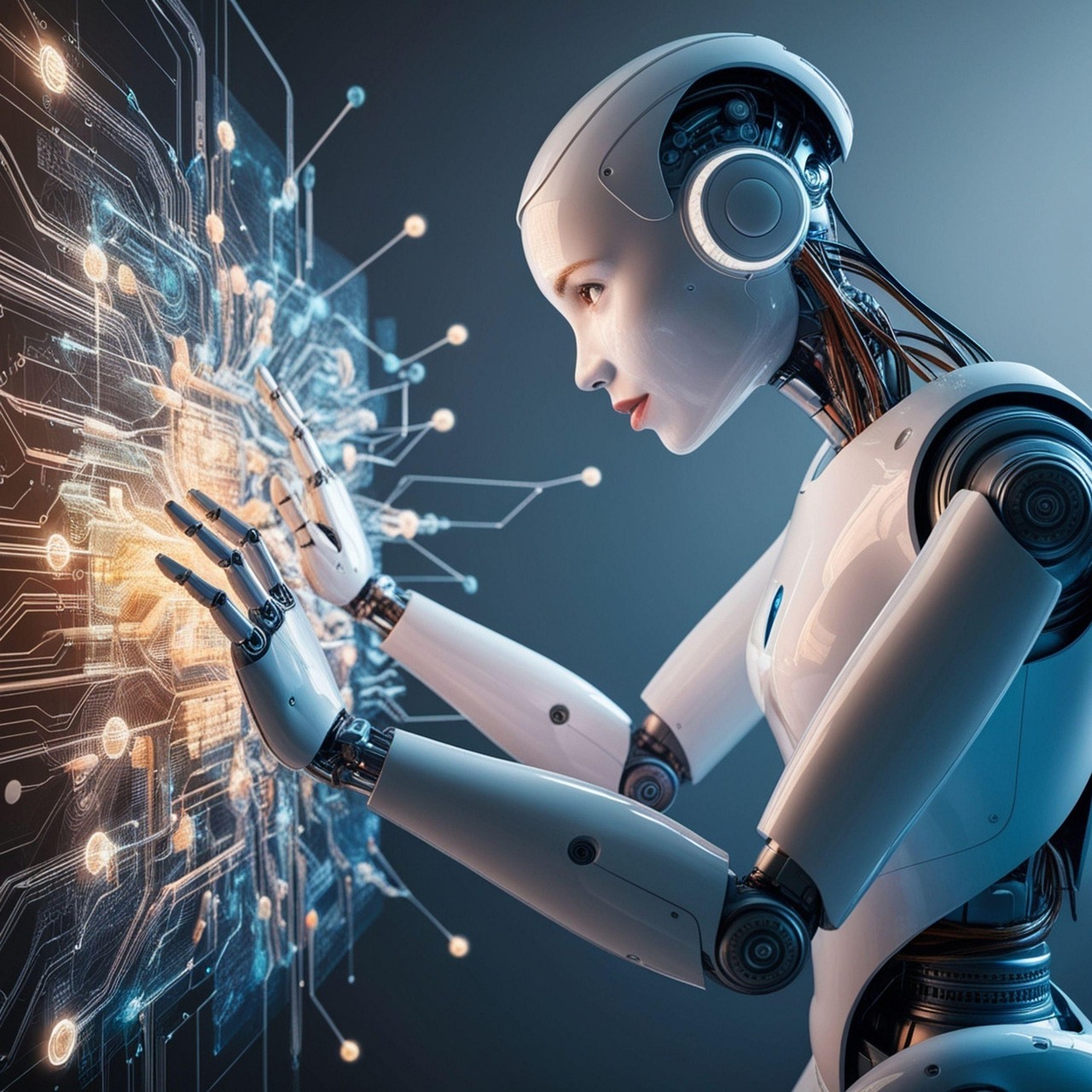Not too long ago, when people talked about AI in content creation, it was mostly about writing articles or blog posts. But things have changed—fast. Now, AI isn’t just working with text—it’s designing visuals, editing videos, and making creative tasks easier than ever.
Let’s take a look at how AI is reshaping the world of content creation in ways we couldn’t have imagined a few years ago.
Table of Contents
AI in Written Content Creation
AI tools are now part of many writing processes. They help with creating, translating, and improving content faster and more efficiently. Here’s how they are used:
Automated Content Generation
One of the most common uses of AI in writing is generating content automatically. Tools like ChatGPT and Jasper can quickly produce blog posts, articles, or product descriptions based on a few keywords or a short prompt.
Writers and businesses use these tools to get a solid first draft without having to start from scratch, making the whole process more efficient.
Why it matters:
- Speeds up the writing process.
- Reduces the need for large writing teams.
- Lowers content production costs.
- Provides a strong starting point for writers.
Language Translation and Localization
AI is also widely used when it comes to reaching a global audience. Translation tools like Google Translate and DeepL do more than simple word-for-word translation—they understand the context and flow of sentences.

Many brands use these tools not only to translate but also to localize their content, adjusting phrases and tone so the message feels natural to readers in different regions.
Why it matters:
- Makes content accessible to people in different languages.
- Helps brands reach global markets quickly.
- Reduces the need for manual translation teams.
- Ensures content feels natural to local audiences.
Editing & Proofreading
On top of creating and translating content, AI also plays a big role in editing. Tools like Grammarly and ProWritingAid help writers catch grammar mistakes, improve sentence flow, and adjust tone. Instead of proofreading everything manually, writers can get instant feedback and suggestions to sharpen their content.
Why it matters:
- Improves overall content quality.
- Saves time on manual editing.
- Helps writers sound professional and clear.
- Reduces the chance of errors slipping through.
AI Detection & Humanizing Tools
While many people use ChatGPT to help with writing, they often want their articles to sound more natural and less AI-generated. In that case, there’s also the option to use a ChatGPT plagiarism checker to see if the content sounds too much like it was written by AI.
If the writing feels too robotic, humanizing tools like AI Humanizer can adjust the language, making it sound more natural and engaging for readers.

Why it matters:
- Ensures content is original and plagiarism-free.
- Helps writers avoid overly mechanical or generic language.
Makes AI-generated text feel more natural and human. - Builds trust by producing authentic, high-quality content.
Together, these AI tools don’t just make writing faster—they help writers deliver clearer, more natural, and higher-quality content.
AI in Visual Content Creation
AI isn’t only useful for writing—it’s also making it much easier to create visual content. From designing graphics to generating original artwork and editing videos, AI tools simplify the process and give creators more options. Here’s how it’s being used:
Graphic Design Automation
Many designers and businesses use AI-powered platforms like Canva’s Magic Design and Adobe Sensei to automate graphic design tasks. There’s also the option to create logos using Lunacy, which offers built-in assets and AI tools for logo design projects.

These tools help quickly create logos, social media posts, marketing materials, and layouts without needing advanced design skills. Users can choose templates, customize visuals, and let the AI handle much of the heavy lifting.
Why it matters:
- Speeds up the design process.
- Makes design accessible to non-designers.
- Reduces the need for hiring graphic design professionals.
- Helps maintain consistent branding across platforms.
AI-Generated Art & Illustrations
Another popular use of AI is generating original artwork based on text prompts. Tools like DALL·E and MidJourney allow users to describe what they want, and the AI creates detailed images or illustrations in seconds. These visuals are widely used in marketing campaigns, branding, entertainment, and even gaming projects.
Why it matters:
- Makes it easy to create custom visuals without needing artistic skills.
- Saves time and effort compared to traditional illustration.
- Provides unique, original images for various creative needs.
- Opens new creative possibilities for designers and marketers.
Video Editing & Production
AI also plays a big role in video content creation. Tools like Magisto and Pictory offer automated video editing features, allowing users to generate professional-looking videos quickly.
AI can handle tasks like trimming clips, adding transitions, and even creating personalized video content. In some cases, advanced technologies like deepfakes and synthetic media are also used to produce realistic, AI-generated videos.
You can even create videos now using AI tools designed for social media—whether it’s faceless videos, TikTok videos, or animated videos, these platforms make the process fast and beginner-friendly
Why it matters:
- Simplifies video editing for creators of all skill levels.
- Reduces production time and effort.
- Enables personalized, dynamic video content.
- Lowers costs compared to traditional video production methods.
AI in Audio Content Creation
Just like AI supports written and visual content, it’s also making a difference in how audio content is created. From generating voices to editing recordings, AI tools help simplify the process and save time.
Voice Generation & Synthesis
AI-powered voice tools like ElevenLabs and Descript’s Overdub allow creators to generate realistic synthetic voices. These are used for voiceovers in explainer videos, audiobooks, virtual assistants, ads, and social media content, helping creators avoid the need to record manually.

ElevenLabs homepage
Why it matters:
- Speeds up voiceover production.
- Provides customizable, realistic voice options.
- Useful for videos, audiobooks, ads, and virtual assistants.
Podcast Editing & Enhancement
Podcasters use AI tools to clean up and improve their recordings. Features like automatic noise reduction, transcription, leveling, and summarization help speed up the editing process and improve sound quality.
Why it matters:
- Improves podcast audio quality.
- Reduces manual editing time.
- Makes podcasts more accessible with transcripts.
Is AI Taking Over Content Creation? Not Exactly
A common question is, “Will AI replace writers or creators?” The answer is no. AI will keep improving, but it’s more likely to work alongside humans, not replace them. It helps with the technical and repetitive tasks, while people stay in control of the creative direction.
Looking ahead, we’ll also see more personalized content and more platforms where creators and AI work together in real time. The future of content creation is about combining human creativity with AI’s efficiency.
Conclusion
We’ve looked at how AI tools are now part of almost every step in content creation—whether it’s writing, visuals, videos, or audio.
They help speed up the process and handle the technical parts, but the ideas, direction, and creativity still come from people. It’s clear that AI is becoming a useful partner, not a replacement.

Andrej Fedek is the creator and the one-person owner of two blogs: InterCool Studio and CareersMomentum. As an experienced marketer, he is driven by turning leads into customers with White Hat SEO techniques. Besides being a boss, he is a real team player with a great sense of equality.
